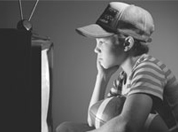 Mental health counselor Debbie Pincus reminds us that when we know where we stand as parents, it is easier for us to figure out what we will and won’t put up with from our child. If we define our boundaries and try to stick to our principles rather than reacting to our moment-to-moment emotions, we will create a home environment that benefits both parent and child.
Mental health counselor Debbie Pincus reminds us that when we know where we stand as parents, it is easier for us to figure out what we will and won’t put up with from our child. If we define our boundaries and try to stick to our principles rather than reacting to our moment-to-moment emotions, we will create a home environment that benefits both parent and child.
Practical Tips for Setting Limits
 Children who are allowed to do whatever they want, whenever they want, and who are given whatever they ask for, have great trouble learning how to cope with frustration. When placed in settings (school!) where they are no longer at the center of anyone’s universe, they have difficult adjusting, and will often act out their frustration, anger and disappointment.
Children who are allowed to do whatever they want, whenever they want, and who are given whatever they ask for, have great trouble learning how to cope with frustration. When placed in settings (school!) where they are no longer at the center of anyone’s universe, they have difficult adjusting, and will often act out their frustration, anger and disappointment.
Modifying Behavior Without Criticism
 It is our natural tendency as parents (and often as partners as well) to pay attention to, and focus more on what is wrong, rather than what is right. As a result, our children and teens feel unappreciated and become less motivated to change or improve their behavior. In addition, they quickly learn that they can get more of our attention through negative behavior or “acting out.”
It is our natural tendency as parents (and often as partners as well) to pay attention to, and focus more on what is wrong, rather than what is right. As a result, our children and teens feel unappreciated and become less motivated to change or improve their behavior. In addition, they quickly learn that they can get more of our attention through negative behavior or “acting out.”
The Impact of Different Parenting Styles (Part II)
 Baumrind’s initial study and the many studies that have followed have led to the following (broadly described) conclusions about the impact of these different parenting styles.
Baumrind’s initial study and the many studies that have followed have led to the following (broadly described) conclusions about the impact of these different parenting styles.
What is Your Parenting Style? (Part I)

The study of parenting patterns and their impact on children has been greatly influenced by research done by psychologist Diana Baumrind in the 1960s, and others in her footsteps.
Using many measures of behavior, she found that parents differed on four important dimensions.